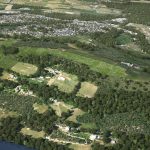News - Construction News
Biodiversity Net Gain: How developers can grow a successful strategy

As the property and construction sector continues to get to grips with the Biodiversity Net Gain (BNG) legislation now in place, planning law experts Stuart Tym and Laura Swindells from Knights look at the key points to be aware of and how to build a successful strategy to ensure delivery of development.
We should all understand the environmental importance of halting the decline of our natural habitats, a notion quite clear through the focus provided by Earth Day. With BNG becoming mandatory for nearly all new planning applications in England, developers, landowners and local planning authorities must ensure that they are aware of their legal requirements.
BNG is not new, and some local planning authorities have been requesting more than 10% delivery through their local plan policy for some time.
The concept was first introduced in the National Planning Policy Framework in 2012, and made mandatory, after some delays, through the Environment Act 2021. Mandatory BNG delivery first came into effect for major developments in February of this year, with small site introduction following from the first week of April.
The overarching aim is to leave the natural environment in a better condition than it was pre-development. Statistics show that the UK is one of the least biodiverse places in the world, so we clearly need urgent action. But the concept is not as simple as it first sounds and may come with challenges.
How is BNG applied through the planning process?
Defra’s statutory biodiversity metric is a tool based on assessments of habitat type, size, distinctiveness, condition, and location.
There must be a net increase of at least 10% biodiversity units (calculated by the metric to measure value) post-development compared to pre-development. No development can go ahead until the biodiversity gain plan has been approved by the local planning authority.
Delivering net gain on-site from the beginning of the development can have the least impact on the environment, for example, with the planned addition of ponds, hedgerows, wildflower beds and wildlife corridors. To this end, we advise clients to employ a qualified ecologist to advise on their applications at the very earliest opportunity and from initial site consideration and setup.
If the 10% cannot be accommodated on-site, an alternative option is to develop land off-site, preferably in the same locality – which can gain another stage of credits – rather than on a developer’s site in a different region. If the habitat is created further away from the original site, developers need to know that the score will be lower.
What are the opportunities and issues in introducing BNG?
It can be difficult to know how to create the right environment to fit the BNG criteria and this could cause some delays to planning applications. There could be a well-designed, well-developed housing estate, industrial or commercial space that has green spaces for people to enjoy but it’s not BNG appropriate because people are walking around in it. Alternatively, an area could be fenced off and allowed to grow wild, but that will also require future maintenance. Having an ecologist on board is paramount to getting the most out of a site and what it can deliver.
It is also crucial to understand that biodiversity is not an optional ‘add-on’ but an opportunity to illustrate a commitment to creating vibrant and sustainable ecosystems within the built environment. It is also a perfect opportunity to educate the wider public about its importance. Developers have the option to be more involved with this mission while delivering key development. There are developers who are at the forefront of biodiversity for example when restoring sites, such as with mineral extraction, where a nature reserve can deliver well above the 10% requirement.
Local authorities will need to monitor the land regarding the 30-year condition on BNG sites. There may be opportunities after the 30-year period as to what happens with the land next. The original design and management plans will really come into play here as they will be essential to demonstrating retention into the future. Local planning authorities will want evidence on funding and physical maintenance responsibilities, alongside a commitment to monitoring and reporting at intervals, which adds to resource, costs and time for all parties.
A collaborative pathway
A world of opportunity has been opened for landowners with BNG being a potential source of revenue, which could fund nature recovery work on land owned. Off-site biodiversity units could be sold to developers, who may need to buy these under mandatory BNG requirements.
The new legislation has put organisations on a huge learning curve. If they don’t meet their BNG requirements, many will face having their plans rejected and may have to fall back on buying the government credits which are costly. Seeking advice in advance from the right specialists is the best way to safeguard plans and to showcase environmental commitments.
If you would like to read more stories like this, then please click here
Related Articles
More News
- COWI celebrates contract award for Transpennine Route Upgrade
17 May 24
COWI has been awarded a design contract by Network Rail for a section of the Transpennine
- New powers for councils to help build more affordable homes
16 May 24
Councils across the country will be able to buy cheaper land to help build thousands
- Cumbrian construction firm clinches £40M Sellafield contract
15 May 24
Stobbarts Ltd is the latest local SME to deliver major infrastructure projects at Sellafield.






